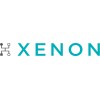
Epilepsy Adherence in Children and Technology (eACT)
EpilepsyFifty-eight percent of children with new-onset epilepsy do not take their antiepileptic drugs (AEDs) as prescribed, which is associated with continued seizures, mortality, poor quality of life, and high healthcare costs. Evidence-based adherence interventions are lacking and critically needed, especially for children with epilepsy, who represent an underserved population in pediatrics. The current proposal is a mHealth sequential, multiple assignment, randomized trial (SMART) focused on providing education, automated digital reminders, and individualized adherence feedback, as well as teaching problem-solving skills, with the goal of improving adherence and quality of life and decreasing seizures and health care utilization.

A Study to Test the Safety and Tolerability of Brivaracetam in Children and Adolescents With Seizures...
EpilepsyThe purpose of the study is to evaluate the long-term safety and tolerability of brivaracetam.

Add-on Clioquinol in Drug-resistant Childhood Epilepsy: an Exploratory Study
Epilepsy IntractableIn this exploratory trial, the potential anti-seizure activity of clioquinol in a small cohort of adolescents with drug-resistant epilepsy will be examined. Subjects will be exposed to clioquinol add-on for a period of maximum 8 weeks (2 weeks low dose, 6 weeks higher dose). The main hypothesis of the study is that 30% of the included subjects will be responders and that the median seizure frequency reduction will be at least 30%.

Melatonin vs Sleep Deprivation for Nap EEG
EpilepsyIn the pediatric population, electroencephalographic (EEG) recordings are frequently performed in sleep, as it reduces the amount of artifacts and might activate epileptiform discharges. To date, no agreed-upon guidelines are available for hypno-induction for EEG recordings . Among the strategies used, the most commonly used are sleep deprivation, either total or partial, and the use of melatonin, alone or in combination. The investigators proposed a study aiming at evaluating the efficacy of a melatonin-based solution for sleep induction during EEG video recording VS sleep deprivation. In a randomized, crossover study, 30 pediatric patients (aged 4-10 years) will be subjected to two EEG recordings: in one they will receive the melatonin solution (5 mg), in the other they undergo only partial sleep deprivation (about 50% of physiological sleep). The primary endpoint of the study is represented by the time to fall asleep, secondary objectives are represented by frequency of epileptiform discharges, presence/absence of epileptic seizures, In addition, the levels of 6-sulfatoxymelatonina, the primary metabolite of melatonin in saliva and urine, will be determined with a validated LC-MS method.

An Open-Label Extension of the Study XEN496 (Ezogabine) in Children With KCNQ2-DEE
EpilepsyEpilepsy in Children6 moreTo assess the long-term safety and tolerability of XEN496 in pediatric subjects with KCNQ2 developmental and epileptic encephalopathy (KCNQ2-DEE) who had participated in the primary study (XPF-009-301).

Measuring Blood Flow in the Brain After Epileptic Activity
EpilepsyDepression2 moreIn this clinical trial, postictal phenomena (i.e., headache, delirium) will be investigated after administration of acetaminophen and nimodipine in depressed patients receiving electroconvulsive therapy (ECT). Postictal phenomena are thought to result from decreased cerebral blood flow and decreased oxygen concentration in the brain. It is expected that acetaminophen and nimodipine will reduce these postictal phenomena, compared to no treatment, because they target these mechanisms.

A Study to Investigate the Long-Term Safety of ZX008 (Fenfluramine Hydrochloride) Oral Solution...
Dravet SyndromeLennox Gastaut Syndrome1 moreThis is an international, multicenter, open-label, long-term safety study of ZX008 in subjects with Dravet syndrome, Lennox-Gastaut syndrome or epileptic encephalopathy

Stimulation of the Thalamus for Arousal Restoral in Temporal Lobe Epilepsy
EpilepsyTemporal LobeThe goal is to provide a novel therapeutic option for temporal lobe epilepsy patients when focal impaired awareness seizures cannot be stopped by medications, surgical or laser ablation, or by neurostimulation. The goal is restore consciousness when seizures cannot be stopped. If successful, addition of bilateral thalamic stimulation to existing responsive neurostimulation to rescue consciousness would greatly alter clinical practice and patient outcomes. Importantly, previous approaches aim to stop seizures, whereas this study aims to use thalamic stimulation to improve a major negative consequence when seizures cannot be stopped. The potential impact extends beyond temporal lobe epilepsy to other seizure types, and may also extend more broadly to inform treatment of other brain disorders associated with impaired consciousness and cognition.

Efficacy and Safety of GWP42003-P Oral Solution in Children With Epilepsy With Myoclonic-atonic...
Seizures Associated With EMASThe primary aim of Part A of the study to assess the efficacy and tolerability of GWP42003-P compared to placebo as an adjunctive treatment for children with Epilepsy with myoclonic-atonic seizures (EMAS) -associated seizures. Part B of this study will be conducted to evaluate the long-term safety and tolerability of GWP42003-P in participants with EMAS.

Cannabidiol in Children With Refractory Epileptic Encephalopathy
Epileptic EncephalopathyThis study will assess the safety and tolerability of a cannabidiol-enriched Cannabis Herbal Extract in a small group of children with refractory epileptic encephalopathy. The dosage of Cannabis Herbal Extract will be gradually increased over a four month time period.
